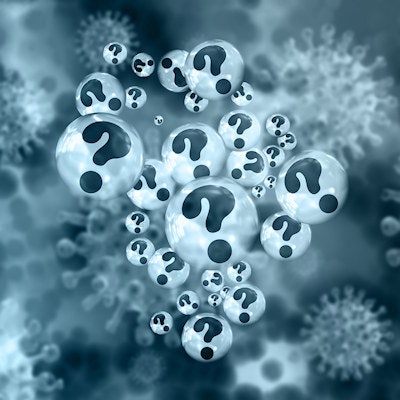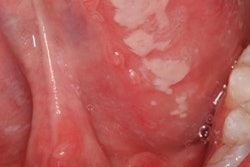
The presence of COVID-19 likely led a woman, who was diagnosed with a rare blood disease, to develop severe hemorrhagic necrosis on her lips. This could show a link between blood diseases and SARS-CoV-2 infection, according to a case report published on September 30 in the Journal of Cosmetic Dermatology.
A 67-year-old woman's paroxysmal nocturnal hemoglobinuria (PNH) caused dermal micro-occlusions that led to extensive, painful necrosis of the lip, but COVID-19 likely made it worse, according to the authors. PNH is an acquired disease that causes blood clots, the destruction of red blood cells, and impaired bone marrow function.
"COVID-19-induced endothelial damage helped to develop exaggerated hemorrhagic necrosis," wrote the group, led by Dr. Filiz Cebeci Kahraman of Istanbul Medeniyet University.
Another comorbidity?
COVID-19 can affect different organ systems, including the oral mucosa. Though skin-related conditions have been linked to the novel coronavirus, the number of cases that have involved the nose and mouth area have been limited. Also, there are limited data about links between COVID-19 and underlying medical conditions such as the hematologic disease affecting this patient. The report sheds light on this potential association and whether it increases the risk of severe illness from the novel coronavirus.
A 67-year-old woman
A woman who was experiencing fatigue and had low platelet and red and white blood cell counts was admitted to the hematology department on March 31, 2020. During a follow-up visit on April 7, 2020, she tested positive for COVID-19. She was transferred to a COVID-19 care unit and was given the HIV antivirals lopinavir/ritonavir (400/100 mg twice a day) and the antibiotics ceftriaxone (1,000 mg twice a day) and doxycycline (100 mg twice a day). As she was admitted to the hospital, clinicians spotted a small, hemorrhagic crusted lesion on her lip, and she was referred to the dermatology clinic, according to the authors.
Her history revealed that the lip lesions started before she was given the drugs, and they were present for two weeks and rapidly progressed during the past week. Doctors noted that the hemorrhagic necrosis was painful, extensive, and thick-crusted and covered the lips entirely, resembling a mass lesion.
Her lab results revealed a white blood cell count of 3.4 x 103/uL, a red blood cell count of 0.57 x 106/uL, and a platelet count of 14.0 x 103/uL. Her hemoglobin level was 2.5 g/dL, and the suspected PNH was confirmed. She was treated with blood transfusions and the immunosuppressive drug eculizumab. Her bone marrow was hypocellular. The patient refused a biopsy, so the suspected diagnosis of severe mucosal thrombosis with hemorrhagic necrosis of the lip associated with PNH could not be confirmed. Nevertheless, her lips were treated with subcutaneous low-molecular-weight heparin and a topical wound healing promoting agent was applied four times a day. Ten days later, her lip necrosis was gone, the authors wrote.
A rare occurrence
Venous thrombosis is seen in up to 40% of European patients who have PNH. It is one of the most severe complications of the disease, which can occur in unusual sites, including cutaneous vessels. However, most PNH-associated skin lesions are reported to be on the lower extremity and the ear, presenting as localized or widespread petechiae, hemorrhagic and necrotic bullae, and/or ulcerations in six cases. Two of these six cases had dermal thrombosis resulting in acute necrosis of the ear. Similarly, this is what this woman experienced, but on her lip, they wrote.
More questions than answers
This woman's case leaves doctors wondering if patients with benign red blood cell defects are more susceptible to COVID-19. Until this case, there was no evidence to support this. However, it is known that underlying conditions such as heart disease and kidney issues intensify COVID-19 complications, so the authors surmised the same is true for blood diseases. Accumulating research shows that the biological mechanism of COVID-19 and its complications are associated with endothelial dysfunction and immune response within the endothelium in blood vessels, they noted.
"Eventually, severe infection with COVID-19 can also precipitate lip necrosis such as acute respiratory distress syndrome and renal failure," the authors wrote.




















